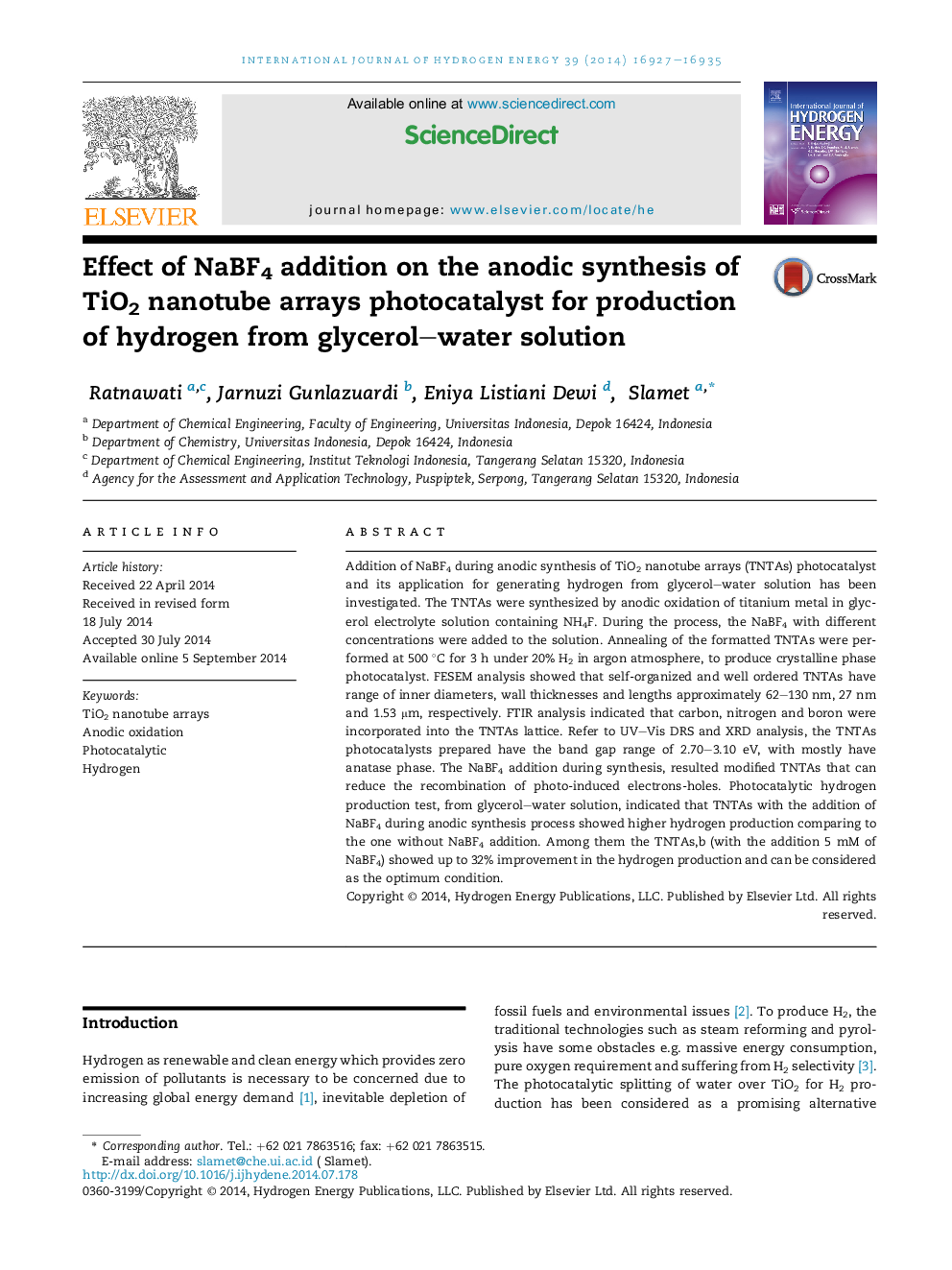| Article ID | Journal | Published Year | Pages | File Type |
|---|---|---|---|---|
| 1272149 | International Journal of Hydrogen Energy | 2014 | 9 Pages |
•Carbon, Nitrogen and Boron were incorporated in the lattice of TNTAs.•Addition of NaBF4 on TNTAs could enhance the current density up to 1.5 times.•Addition of NaBF4 on TNTAs could enhance the H2 generation up to 1.3 times.•Glycerol is a sacrificial agent and serves as hydrogen source.
Addition of NaBF4 during anodic synthesis of TiO2 nanotube arrays (TNTAs) photocatalyst and its application for generating hydrogen from glycerol–water solution has been investigated. The TNTAs were synthesized by anodic oxidation of titanium metal in glycerol electrolyte solution containing NH4F. During the process, the NaBF4 with different concentrations were added to the solution. Annealing of the formatted TNTAs were performed at 500 °C for 3 h under 20% H2 in argon atmosphere, to produce crystalline phase photocatalyst. FESEM analysis showed that self-organized and well ordered TNTAs have range of inner diameters, wall thicknesses and lengths approximately 62–130 nm, 27 nm and 1.53 μm, respectively. FTIR analysis indicated that carbon, nitrogen and boron were incorporated into the TNTAs lattice. Refer to UV–Vis DRS and XRD analysis, the TNTAs photocatalysts prepared have the band gap range of 2.70–3.10 eV, with mostly have anatase phase. The NaBF4 addition during synthesis, resulted modified TNTAs that can reduce the recombination of photo-induced electrons-holes. Photocatalytic hydrogen production test, from glycerol–water solution, indicated that TNTAs with the addition of NaBF4 during anodic synthesis process showed higher hydrogen production comparing to the one without NaBF4 addition. Among them the TNTAs,b (with the addition 5 mM of NaBF4) showed up to 32% improvement in the hydrogen production and can be considered as the optimum condition.
